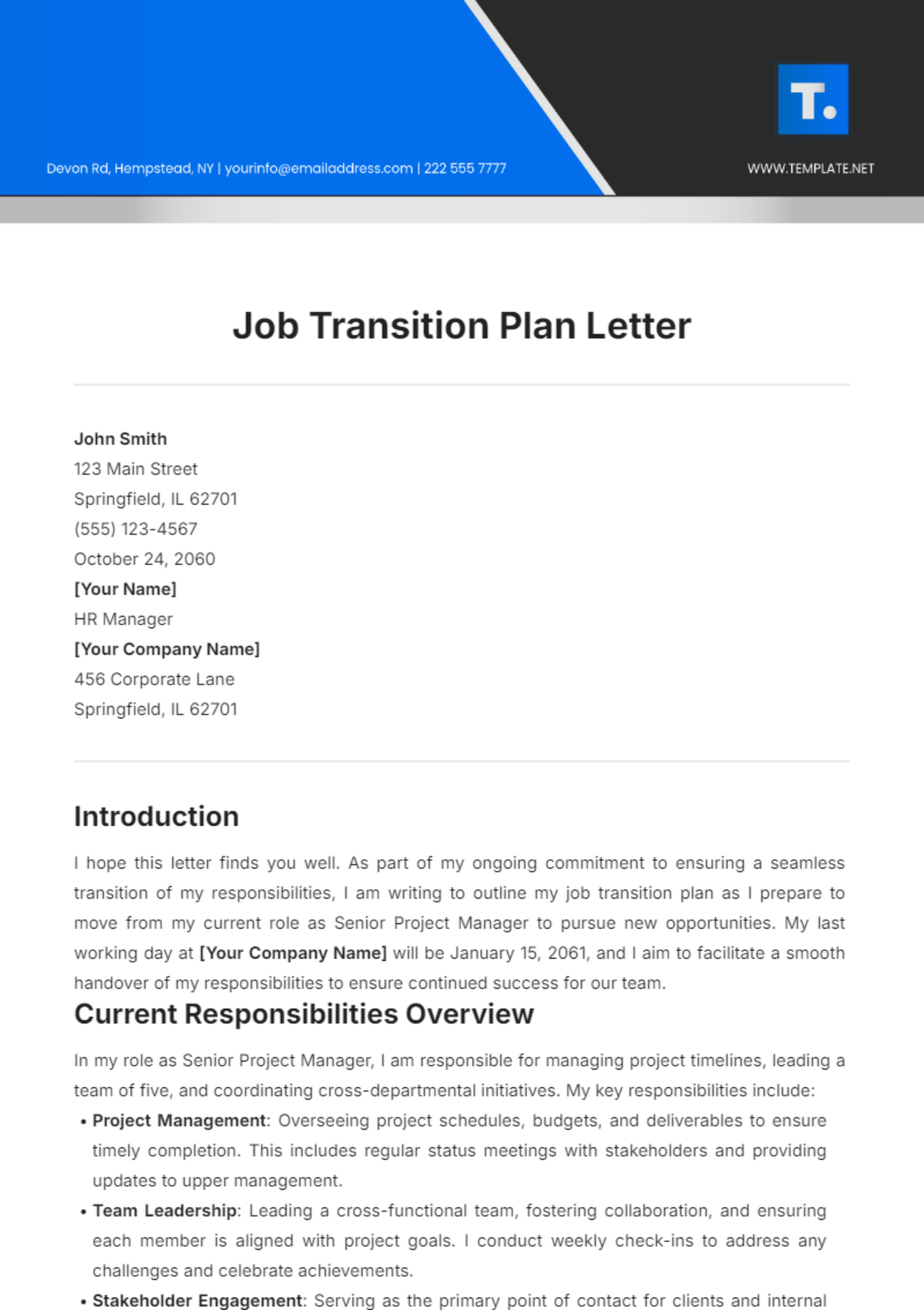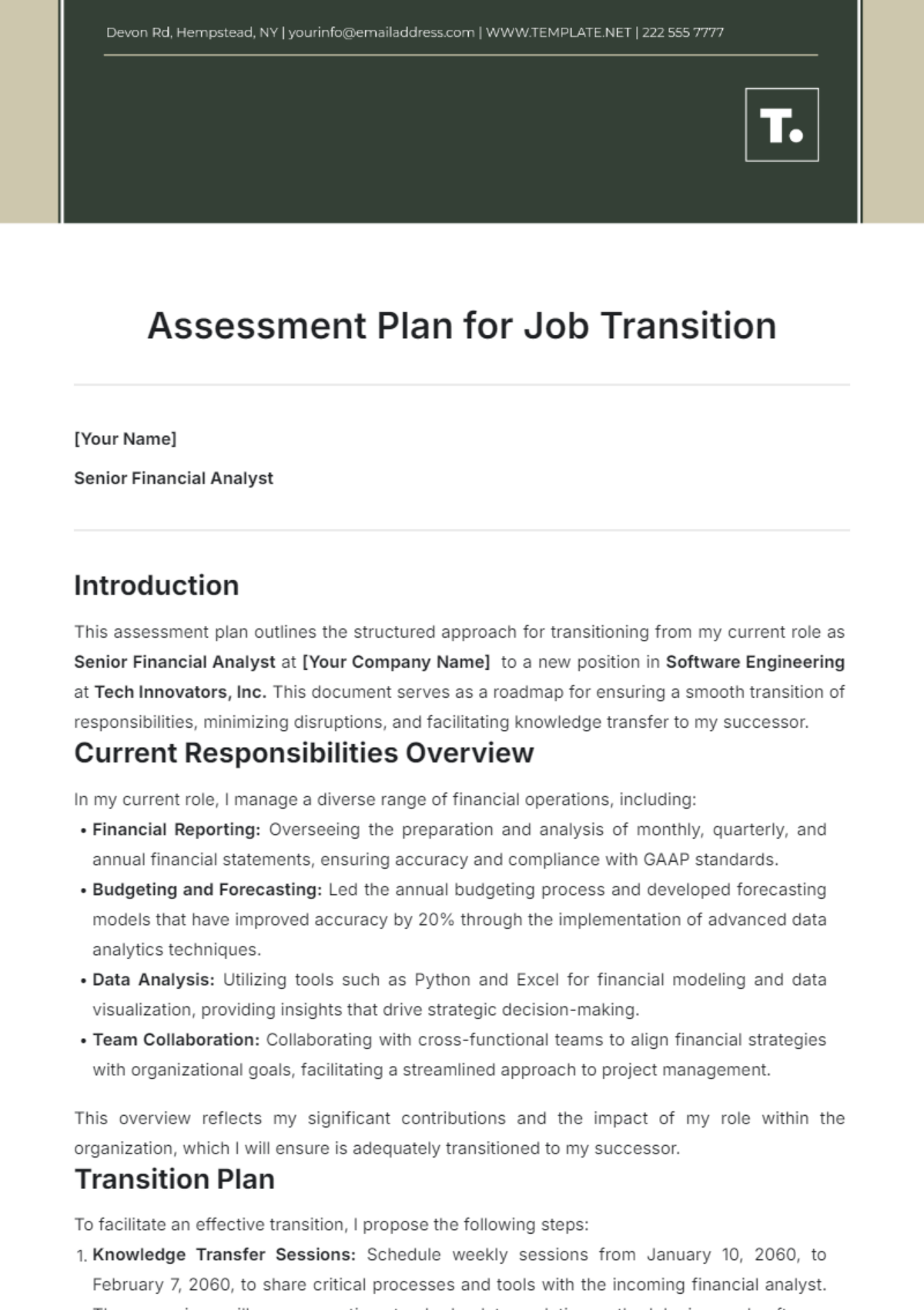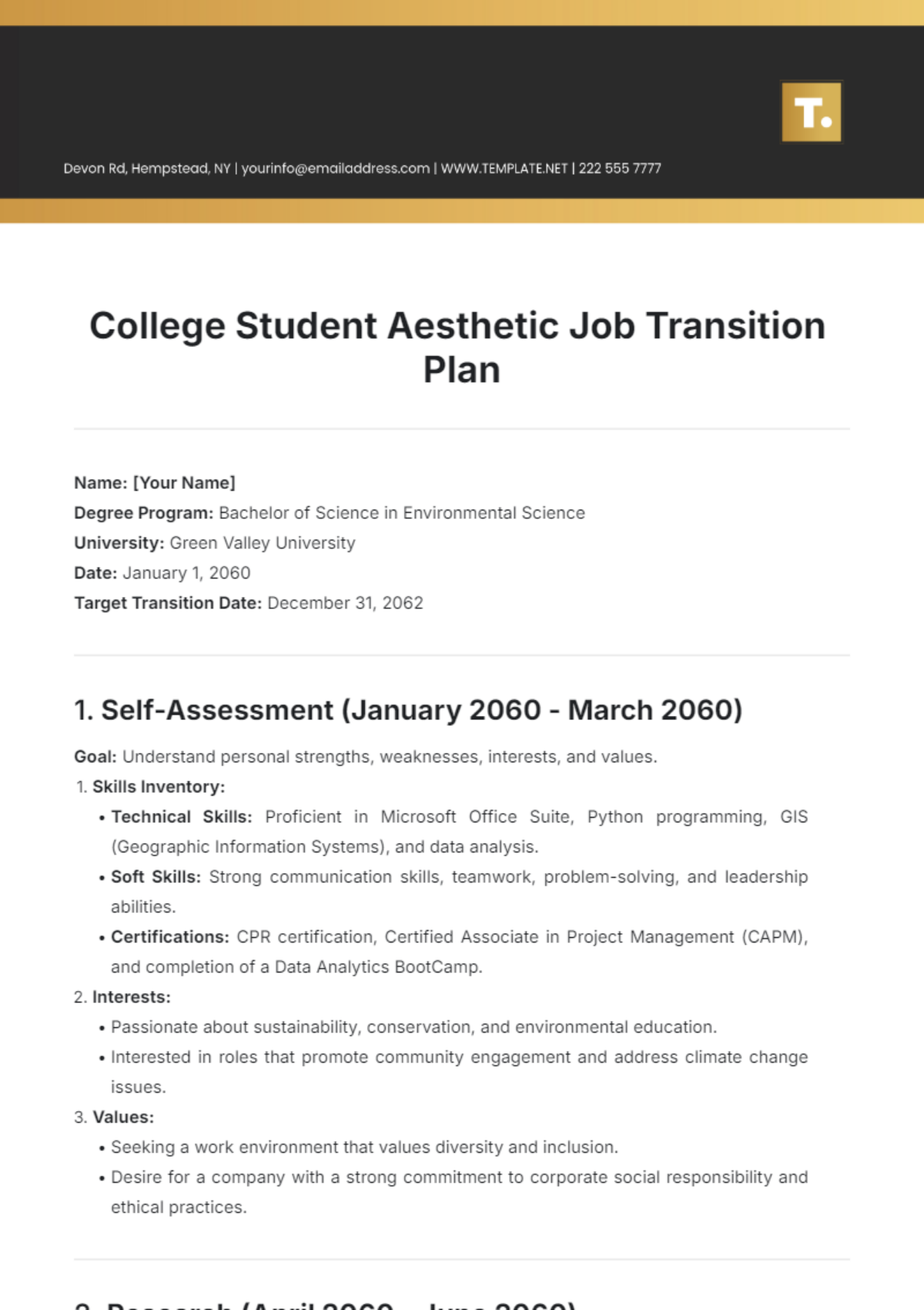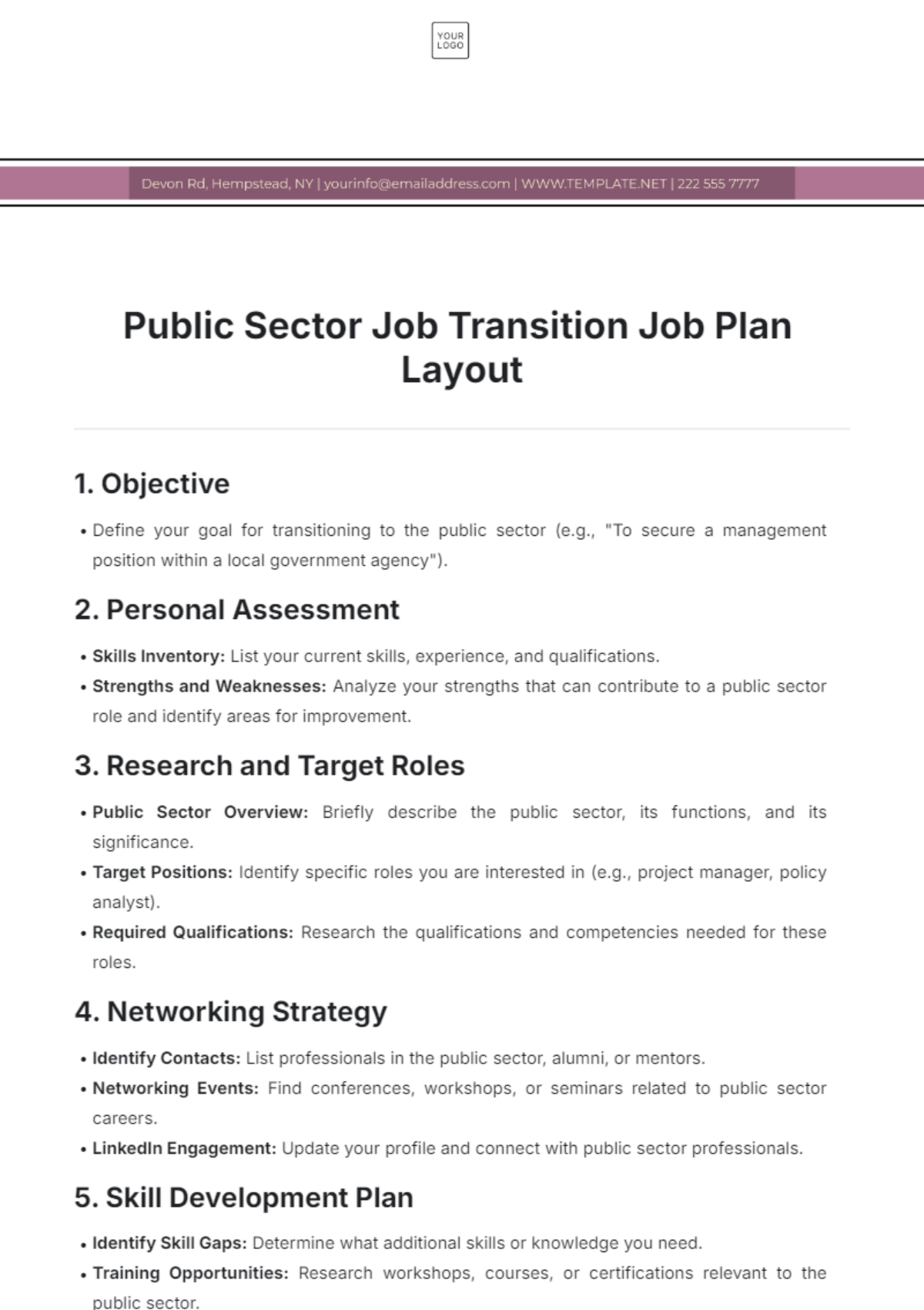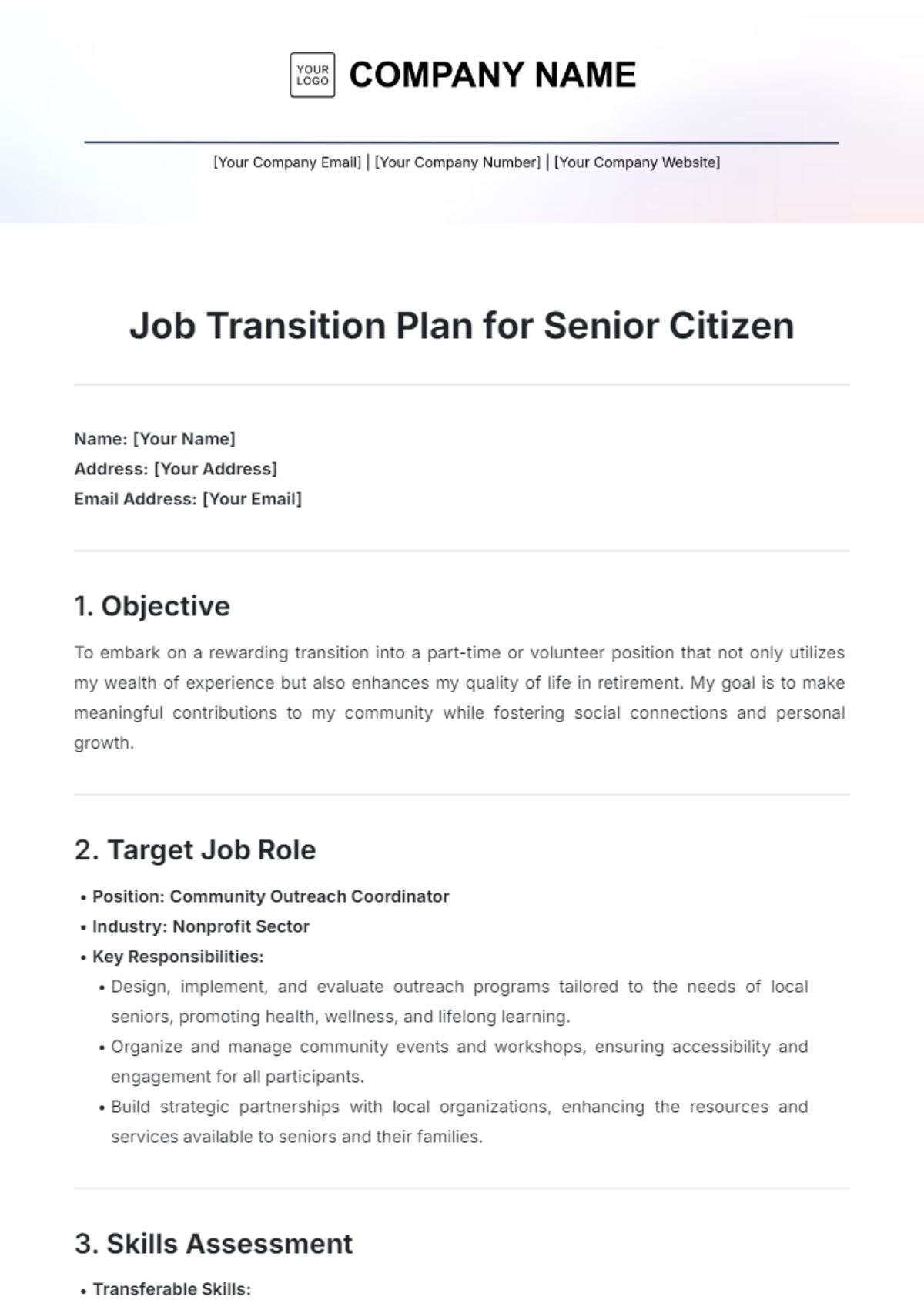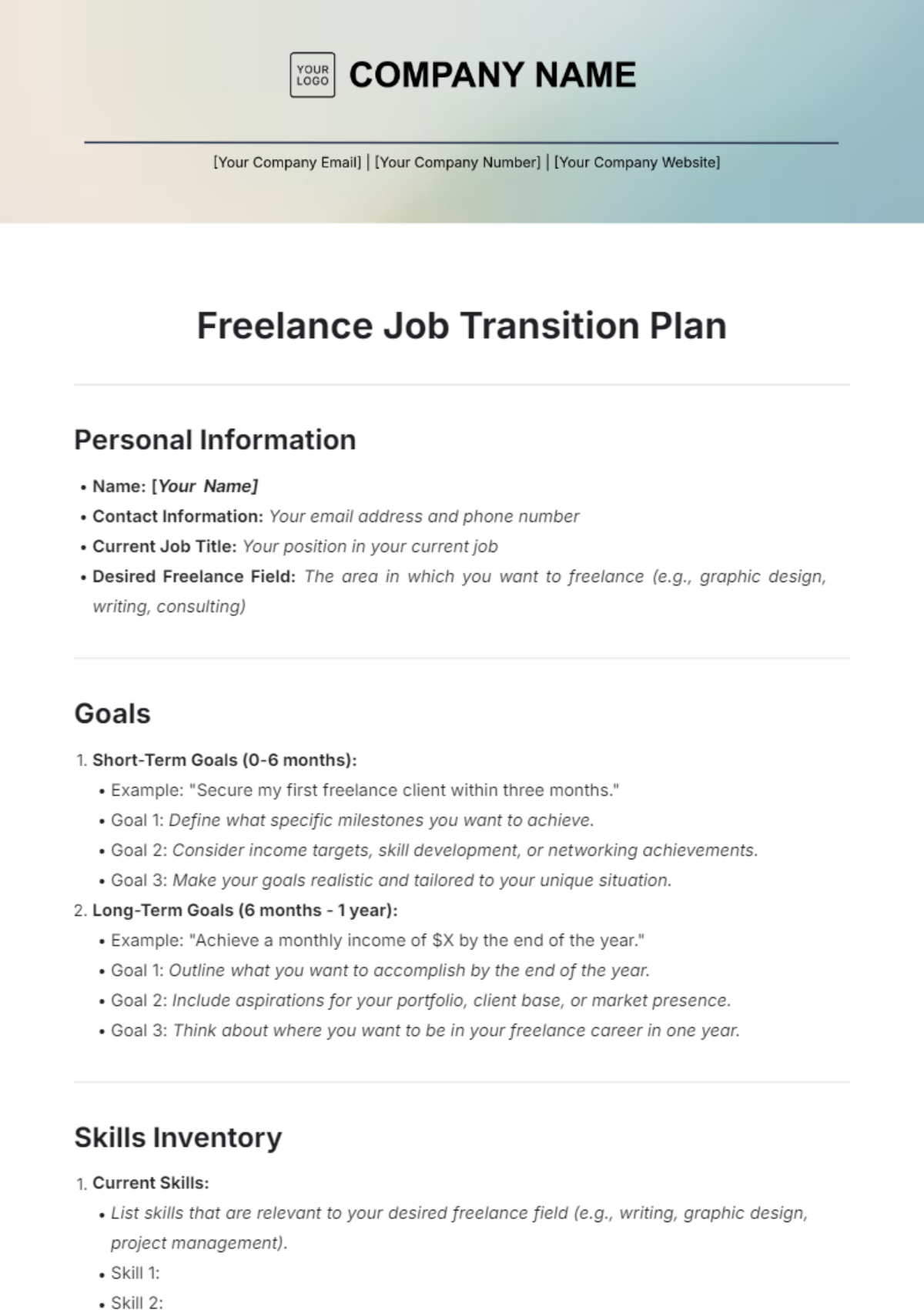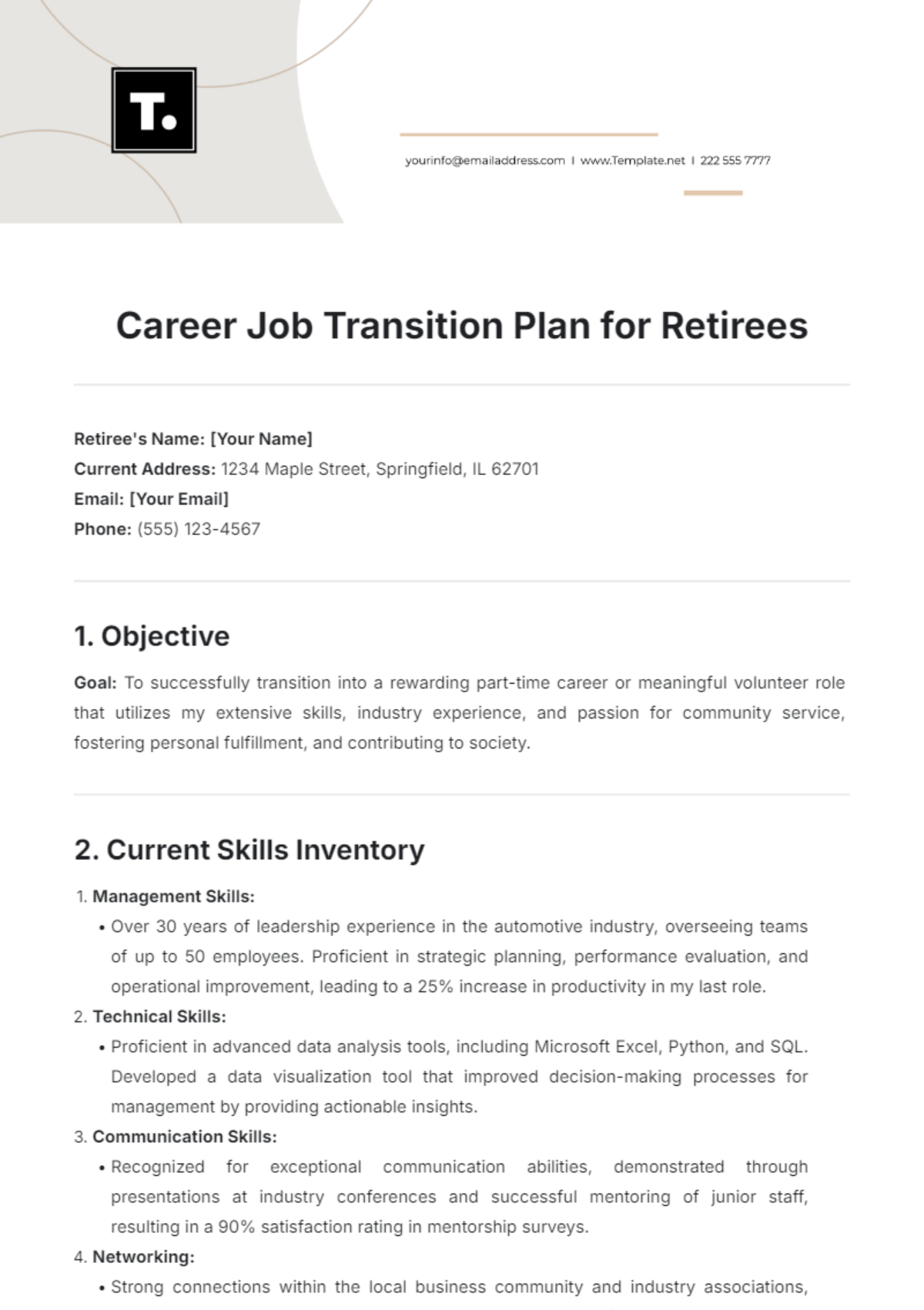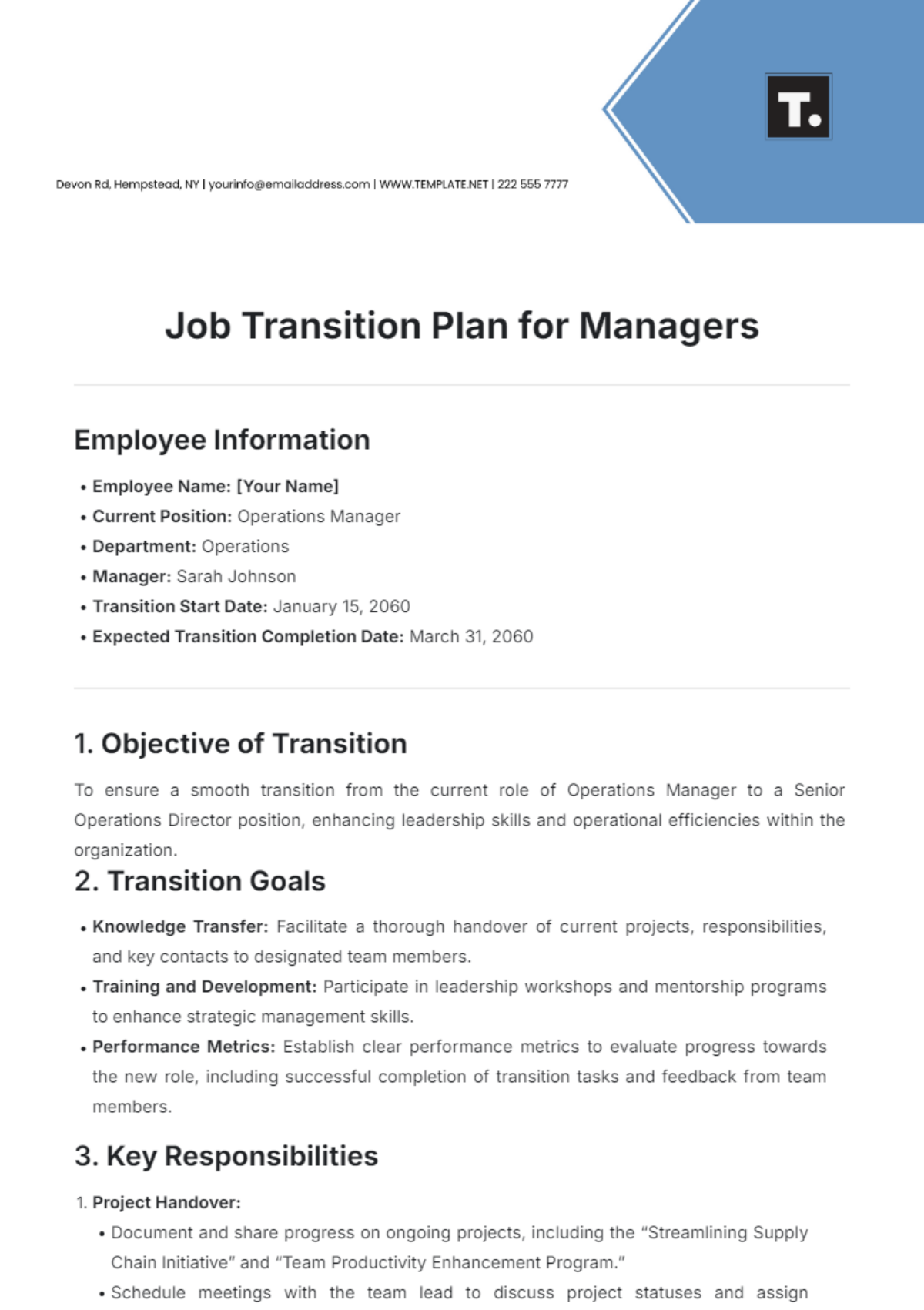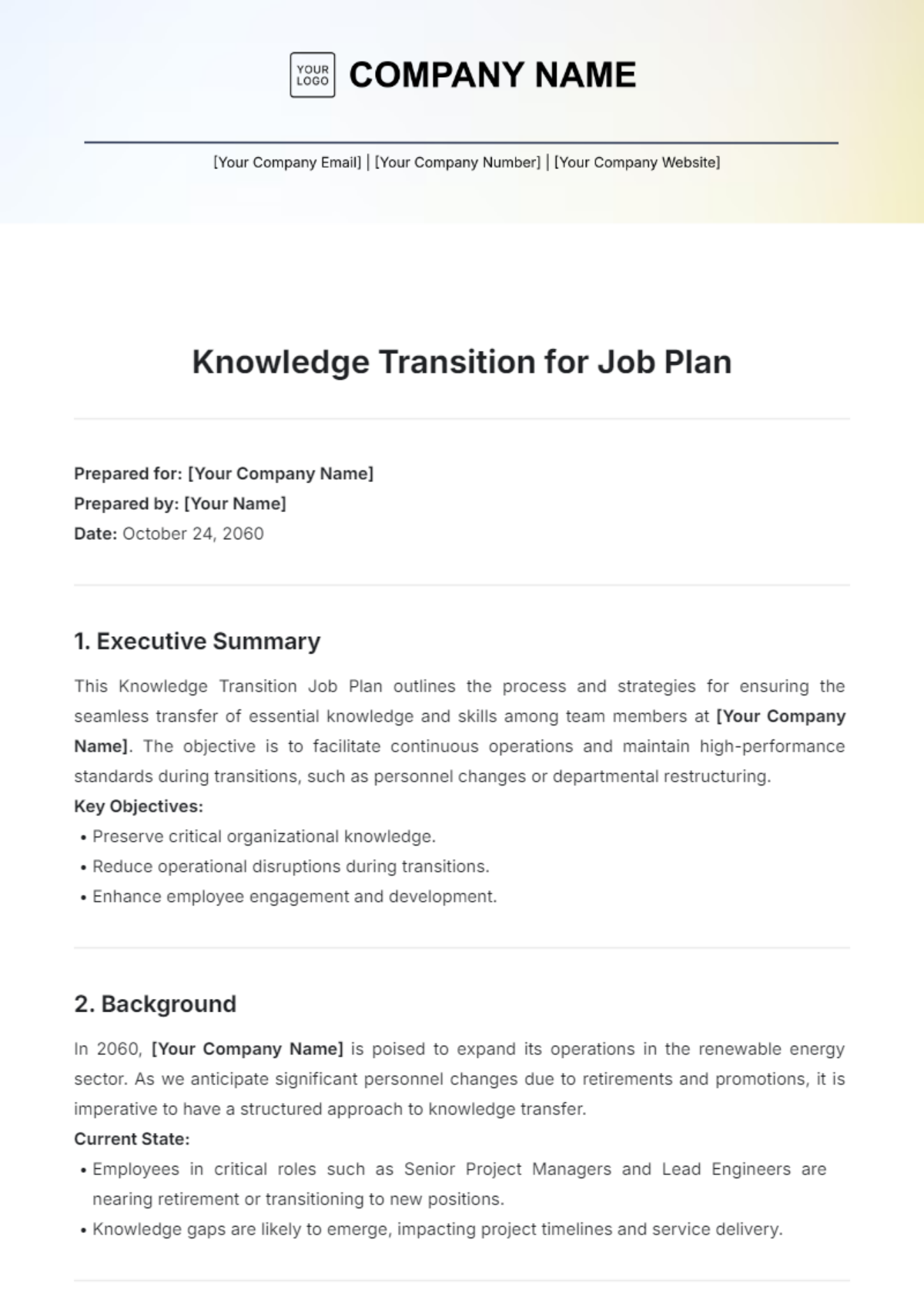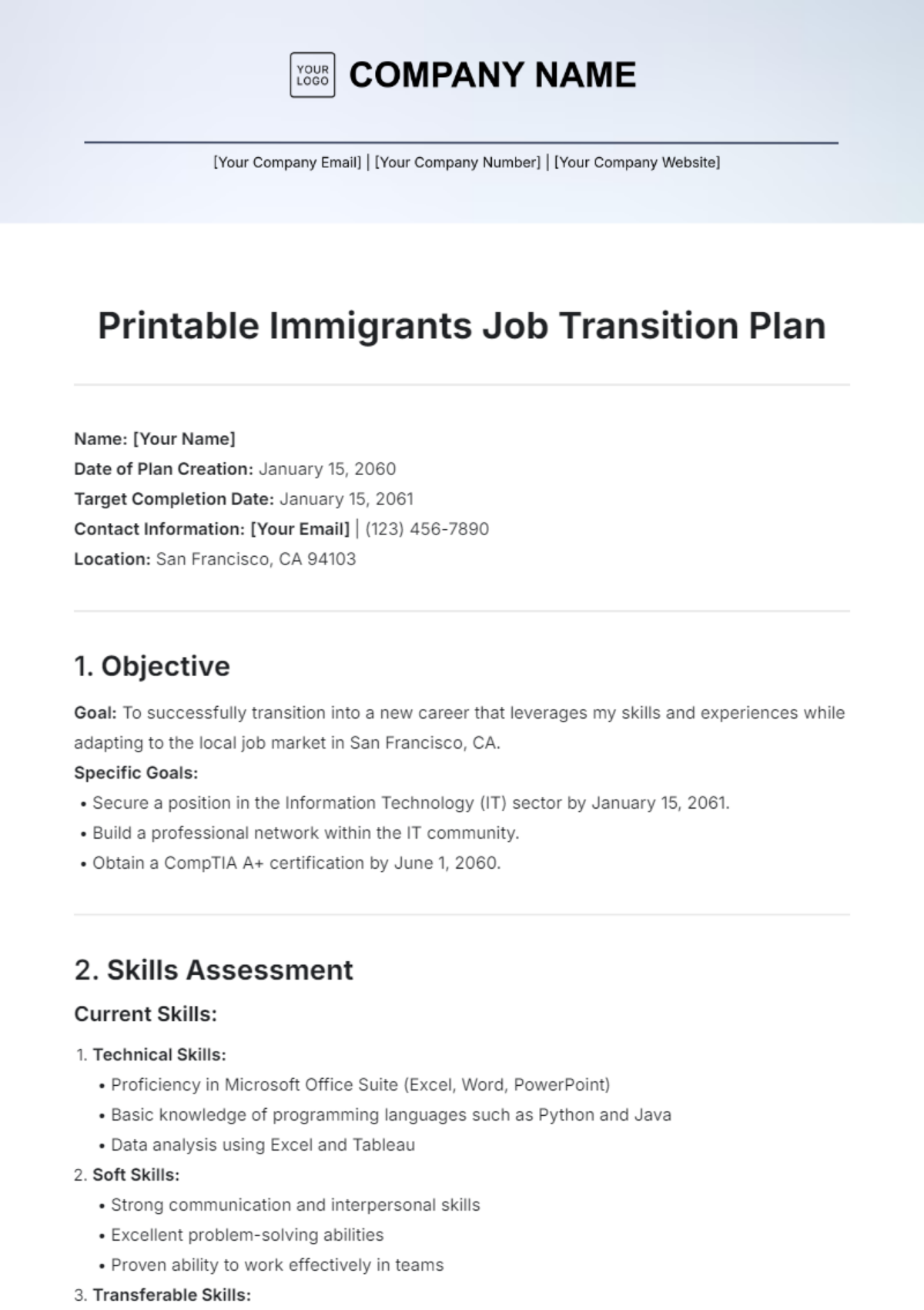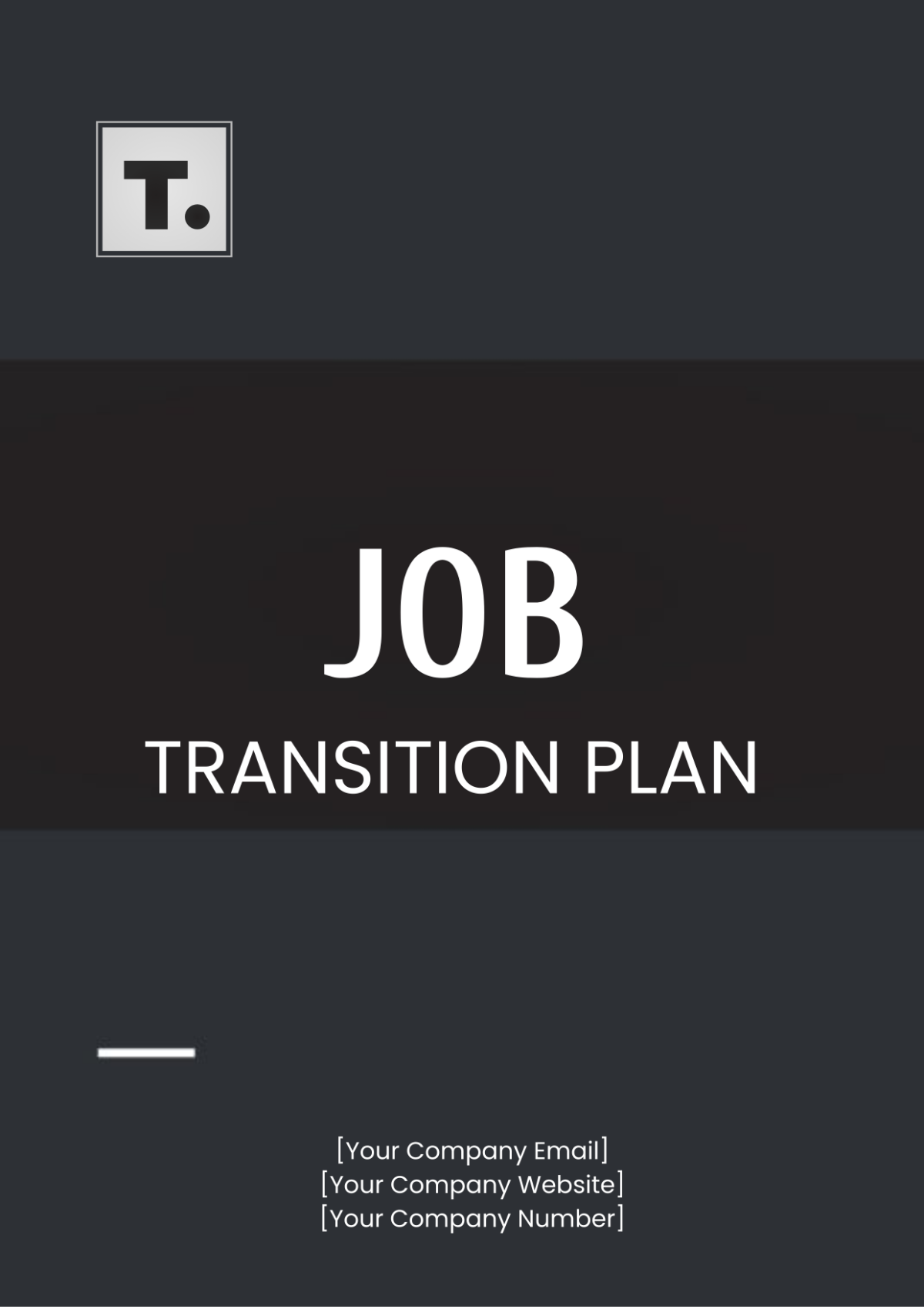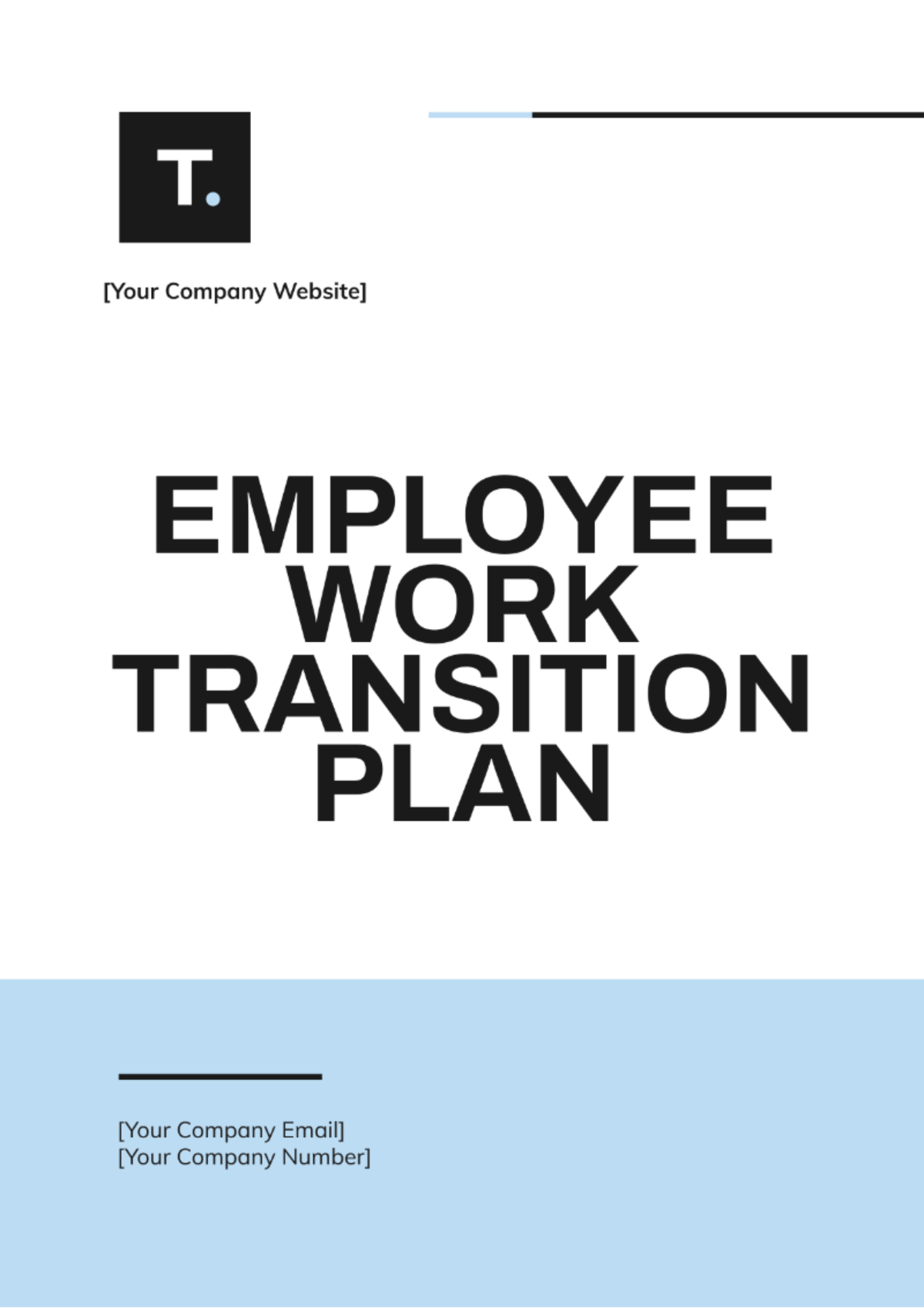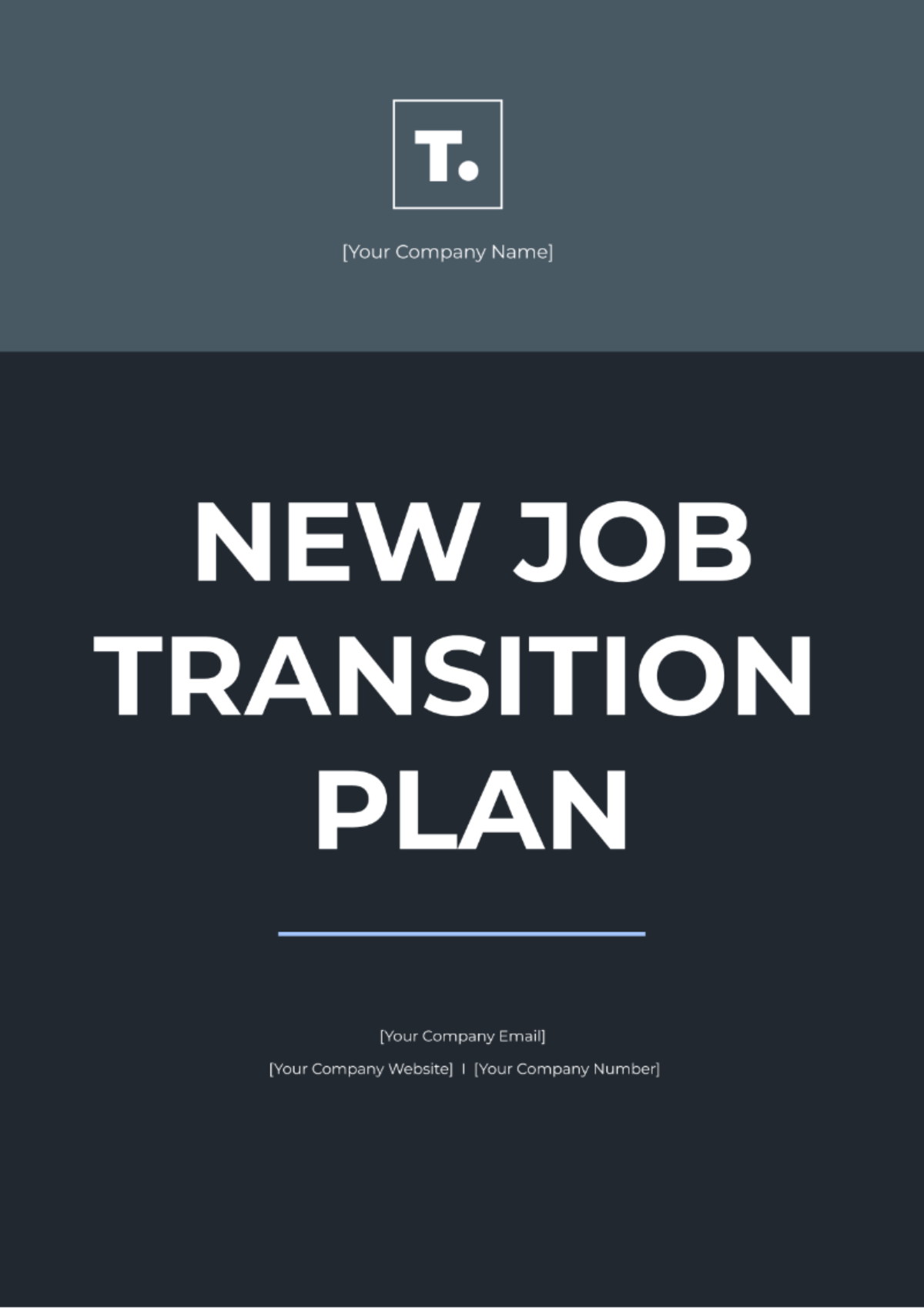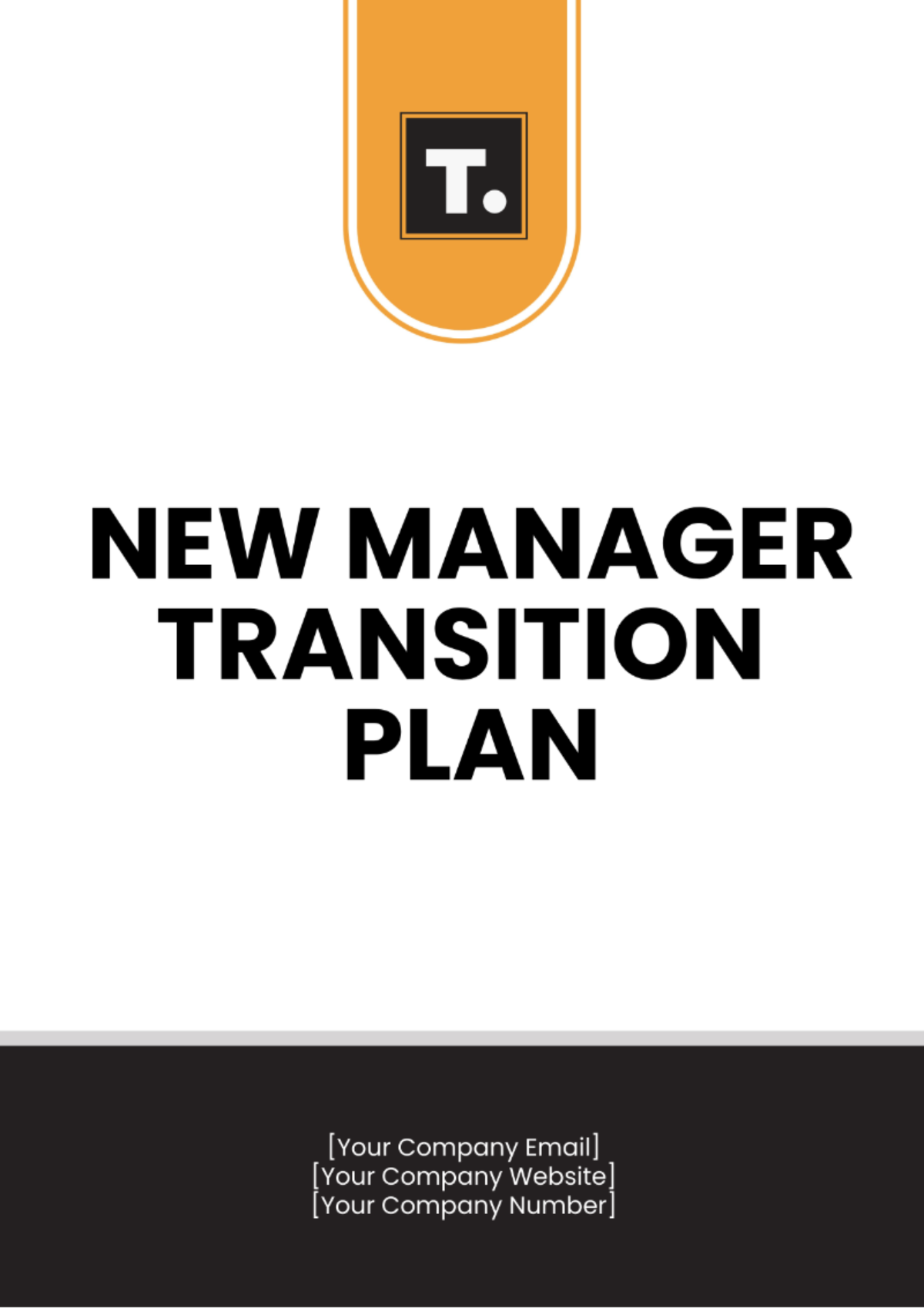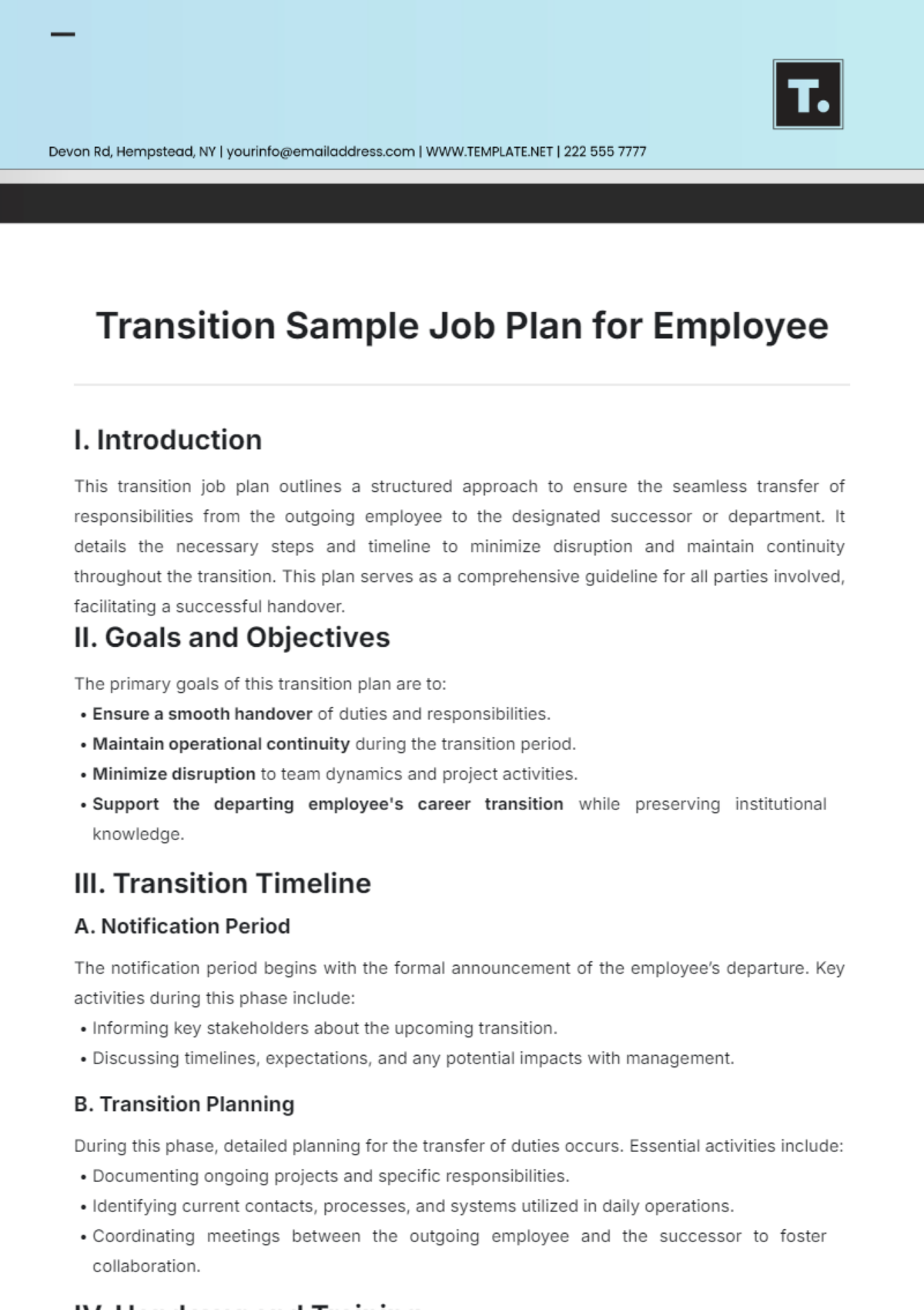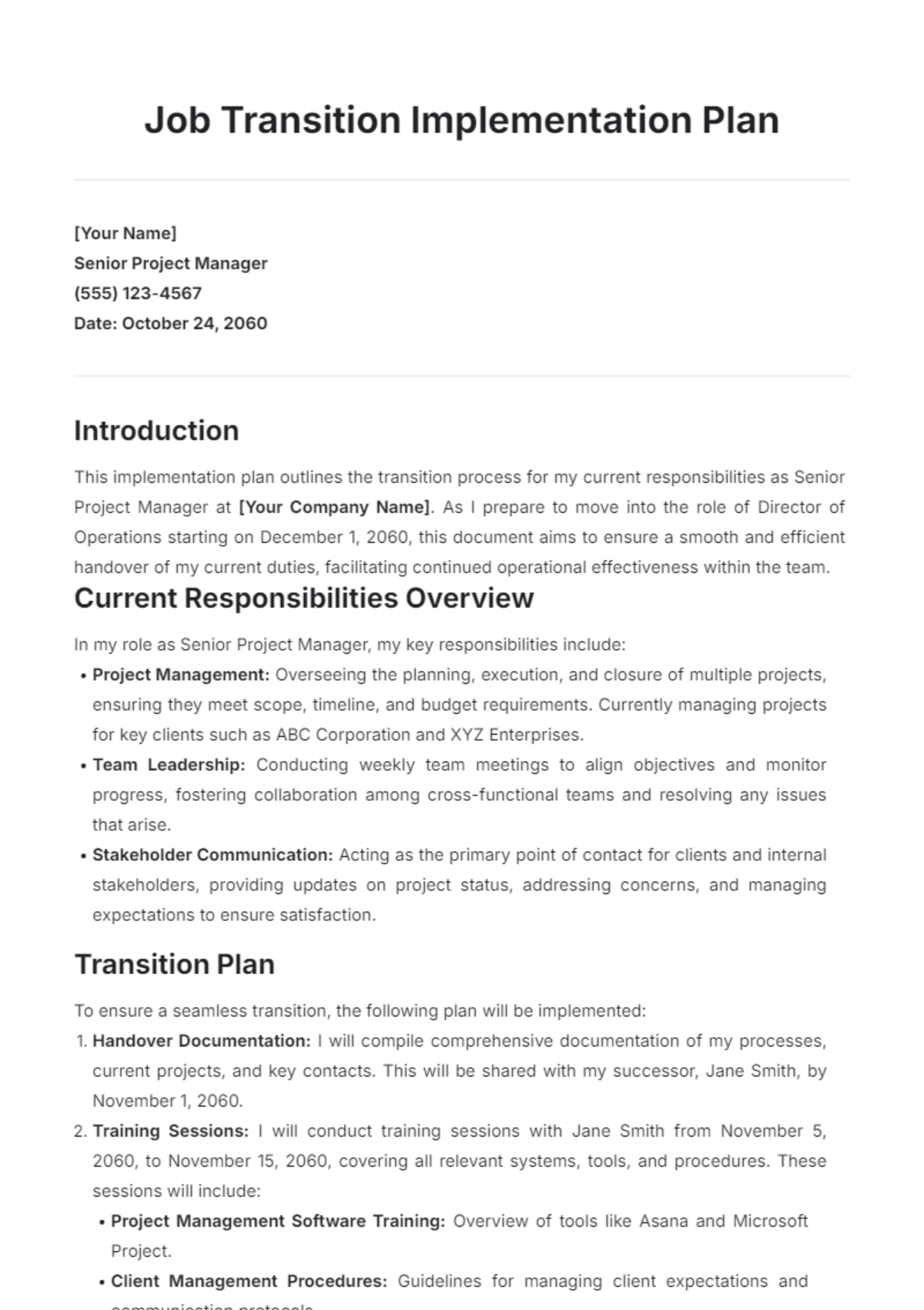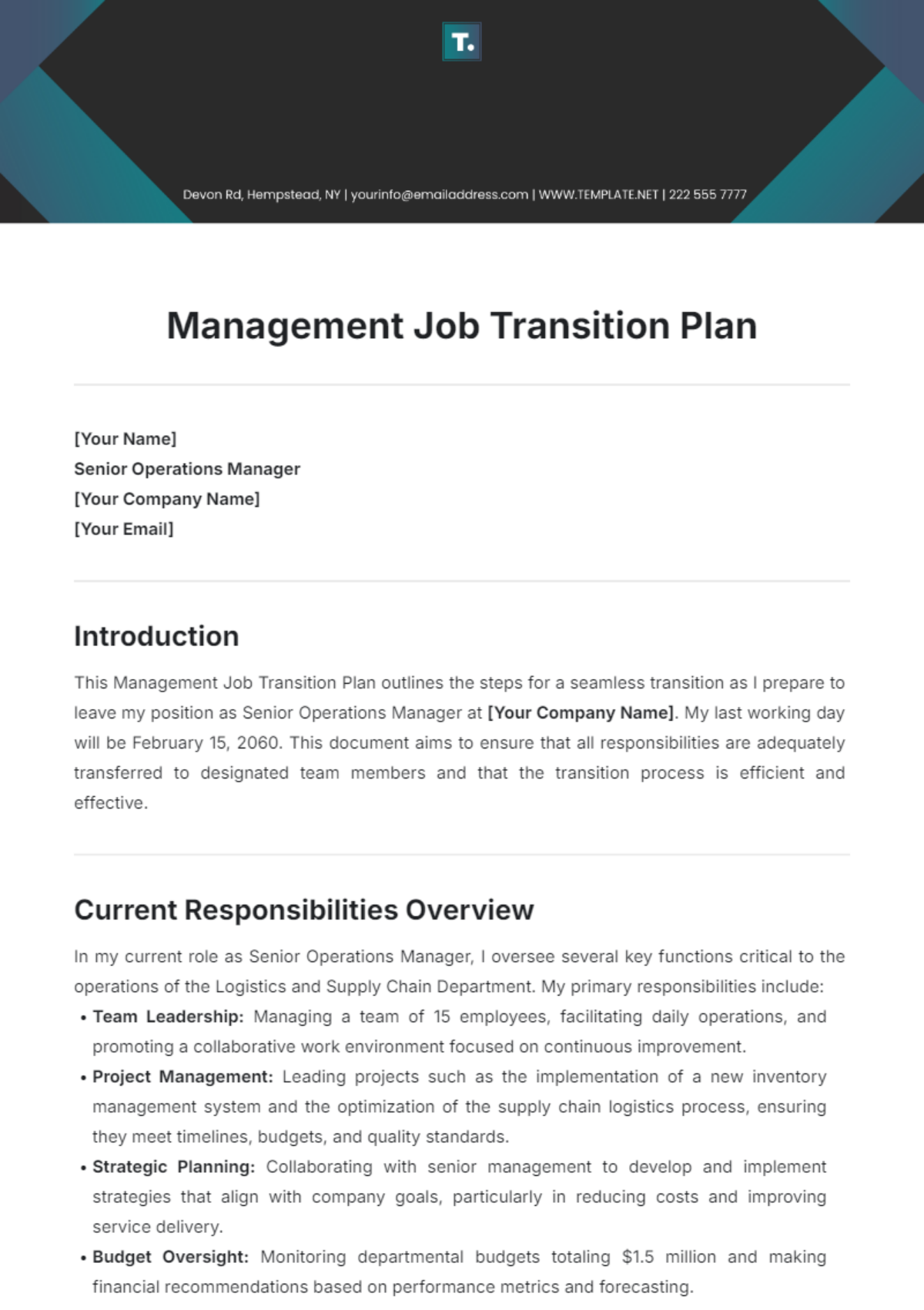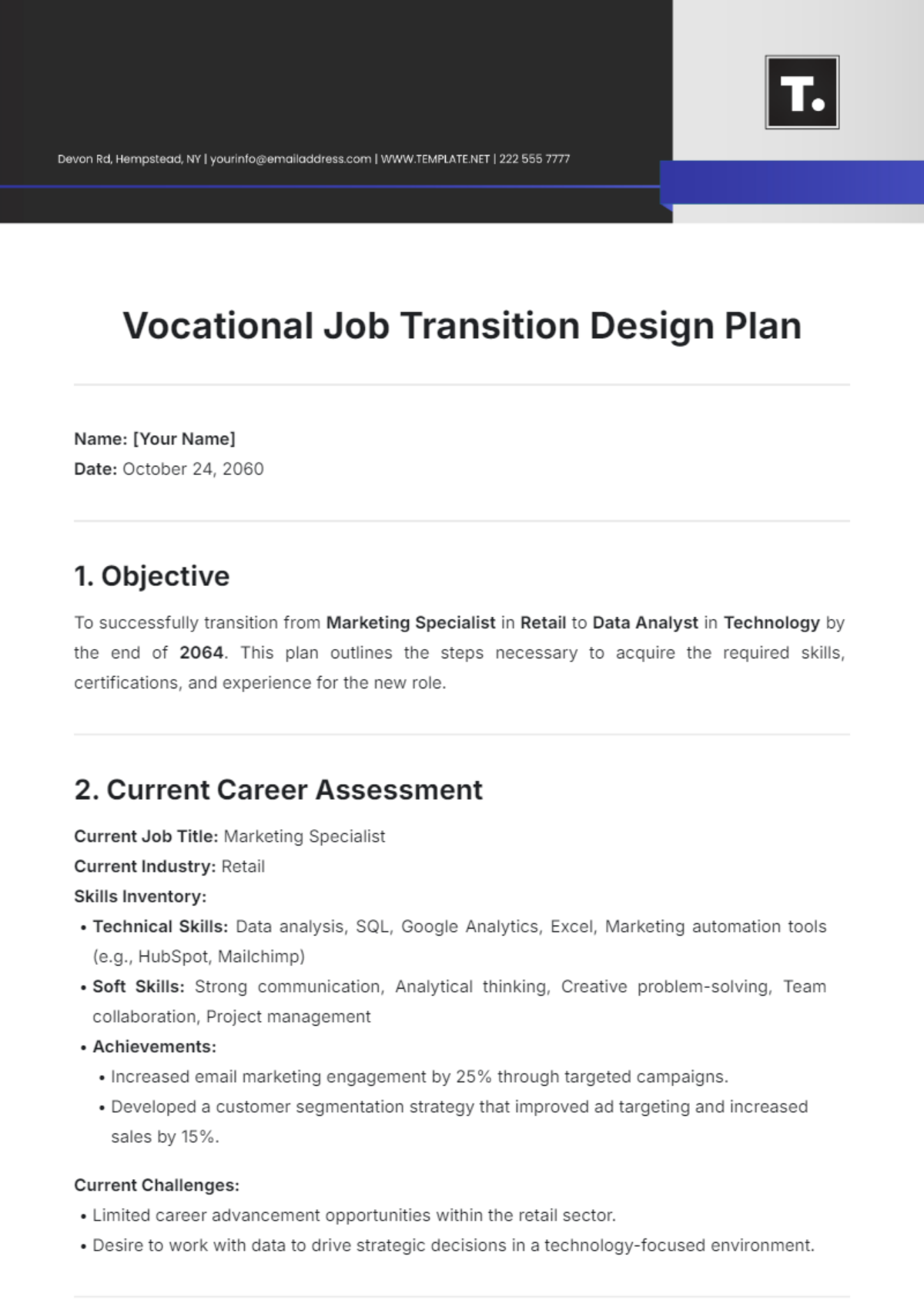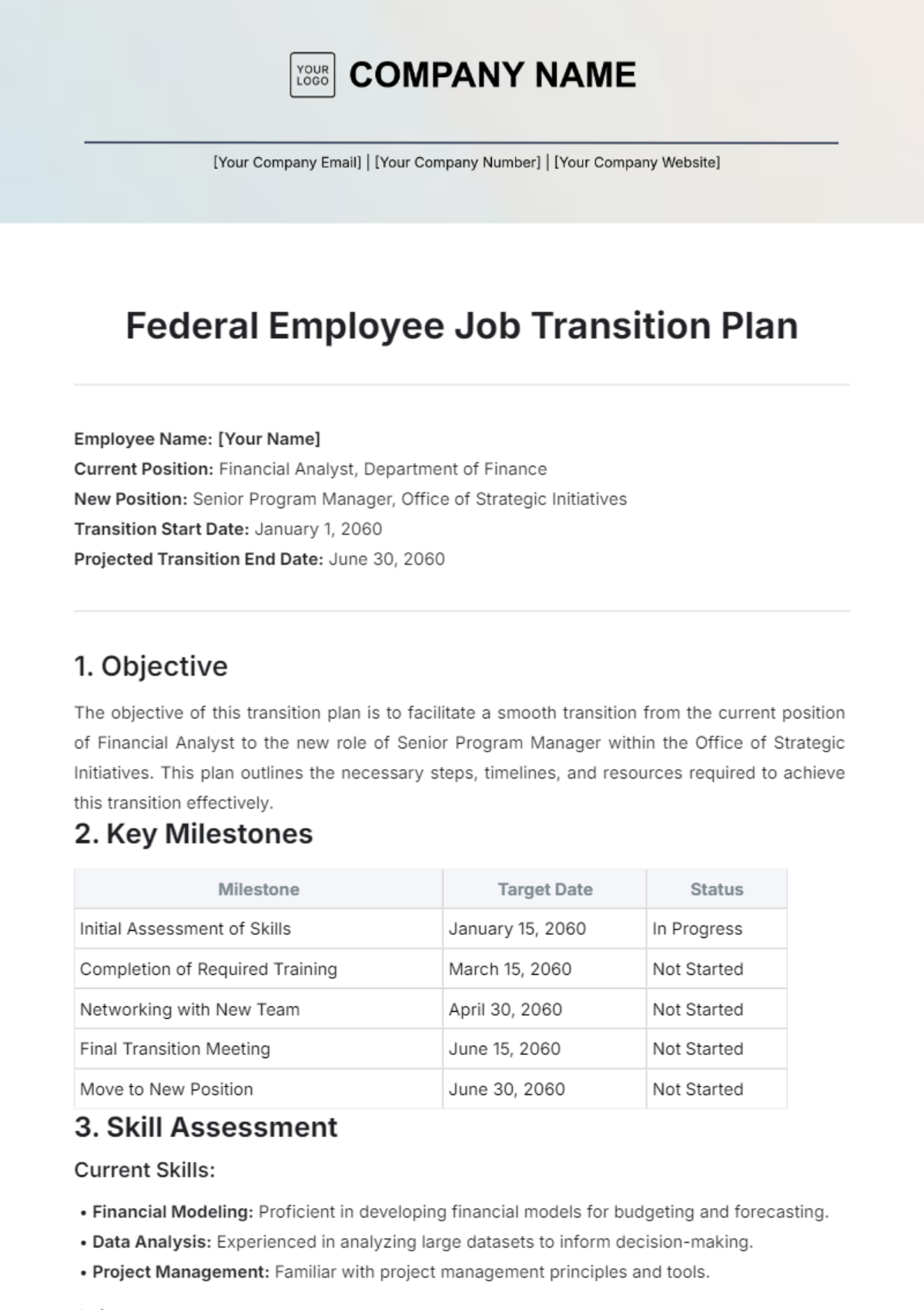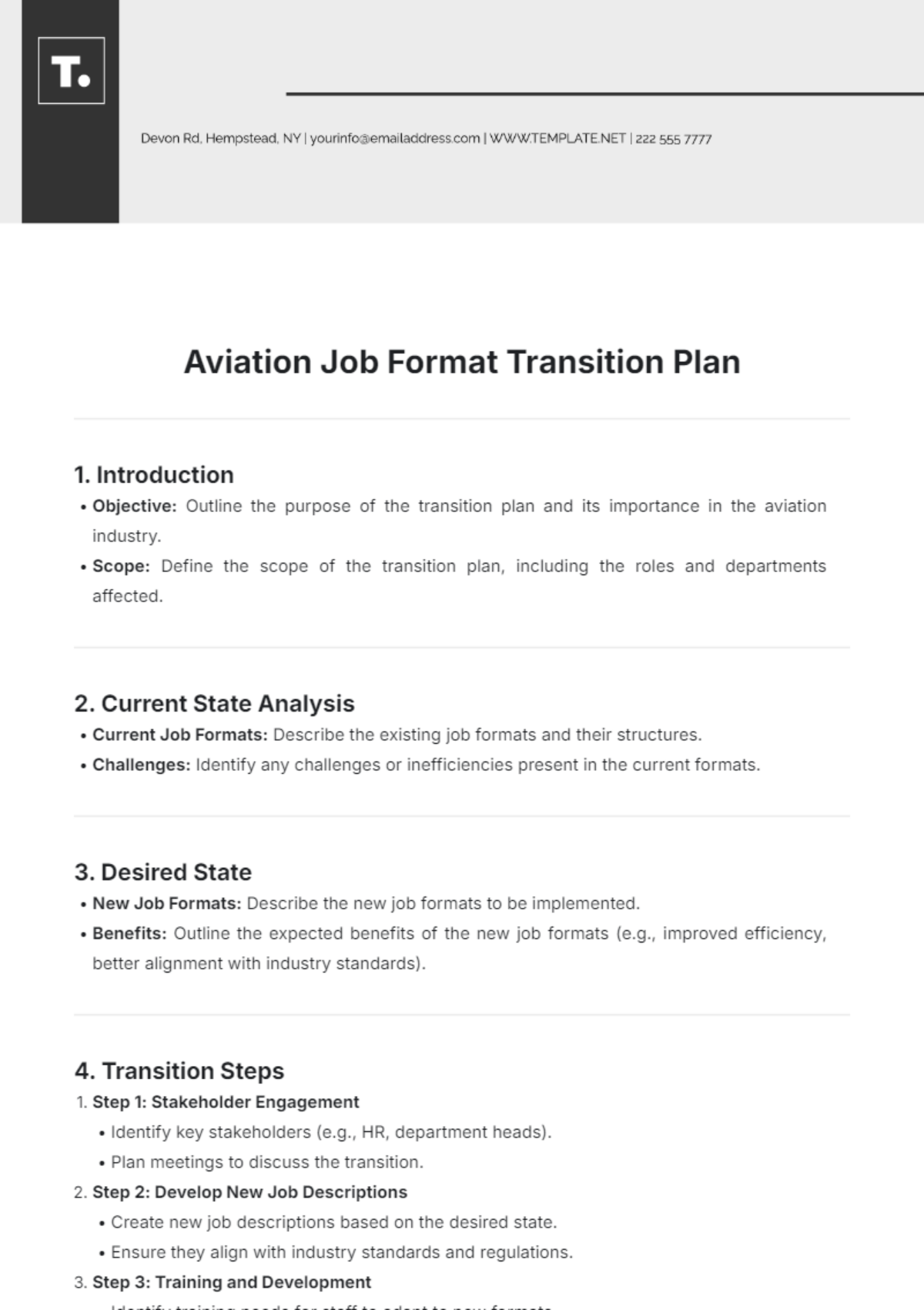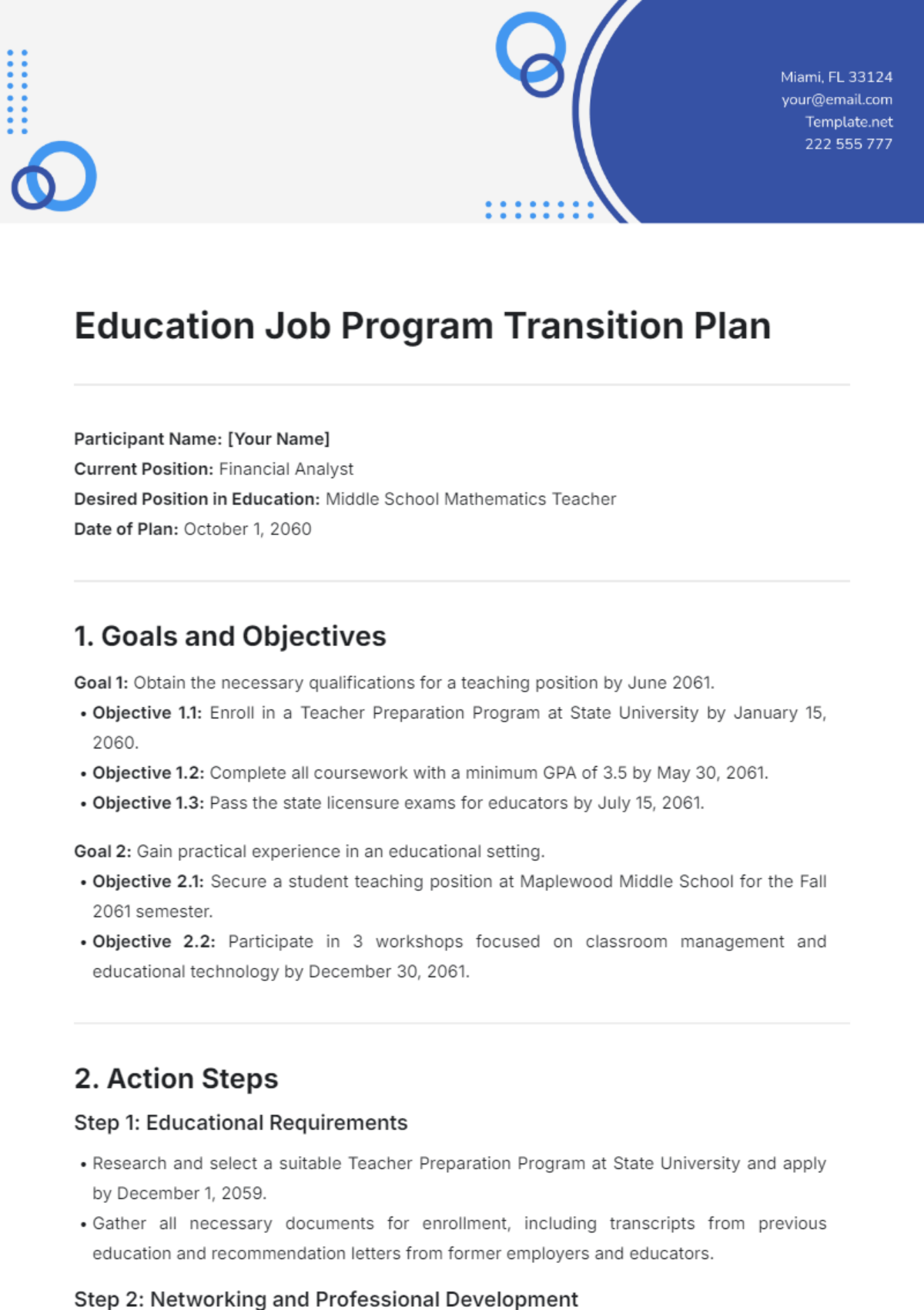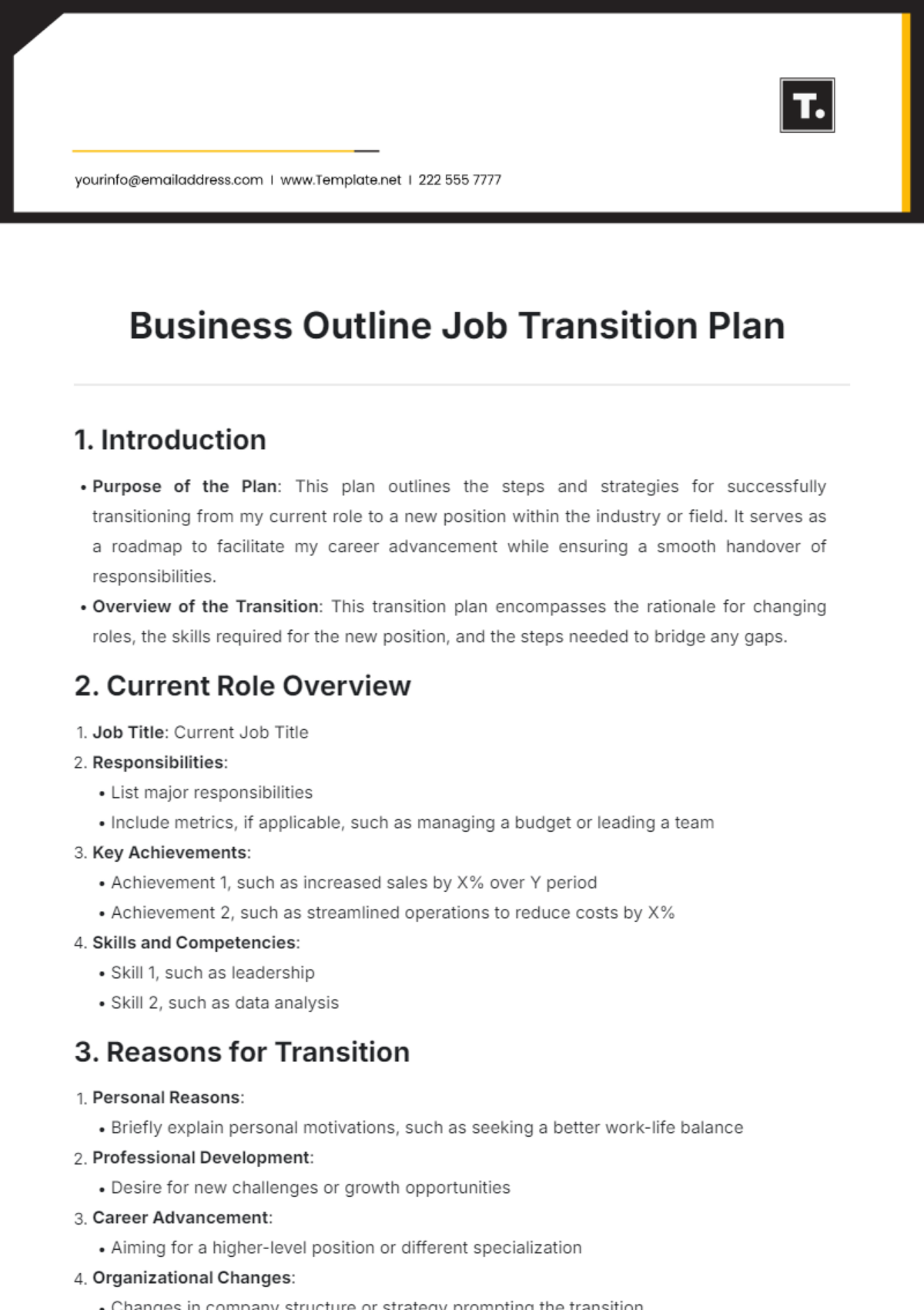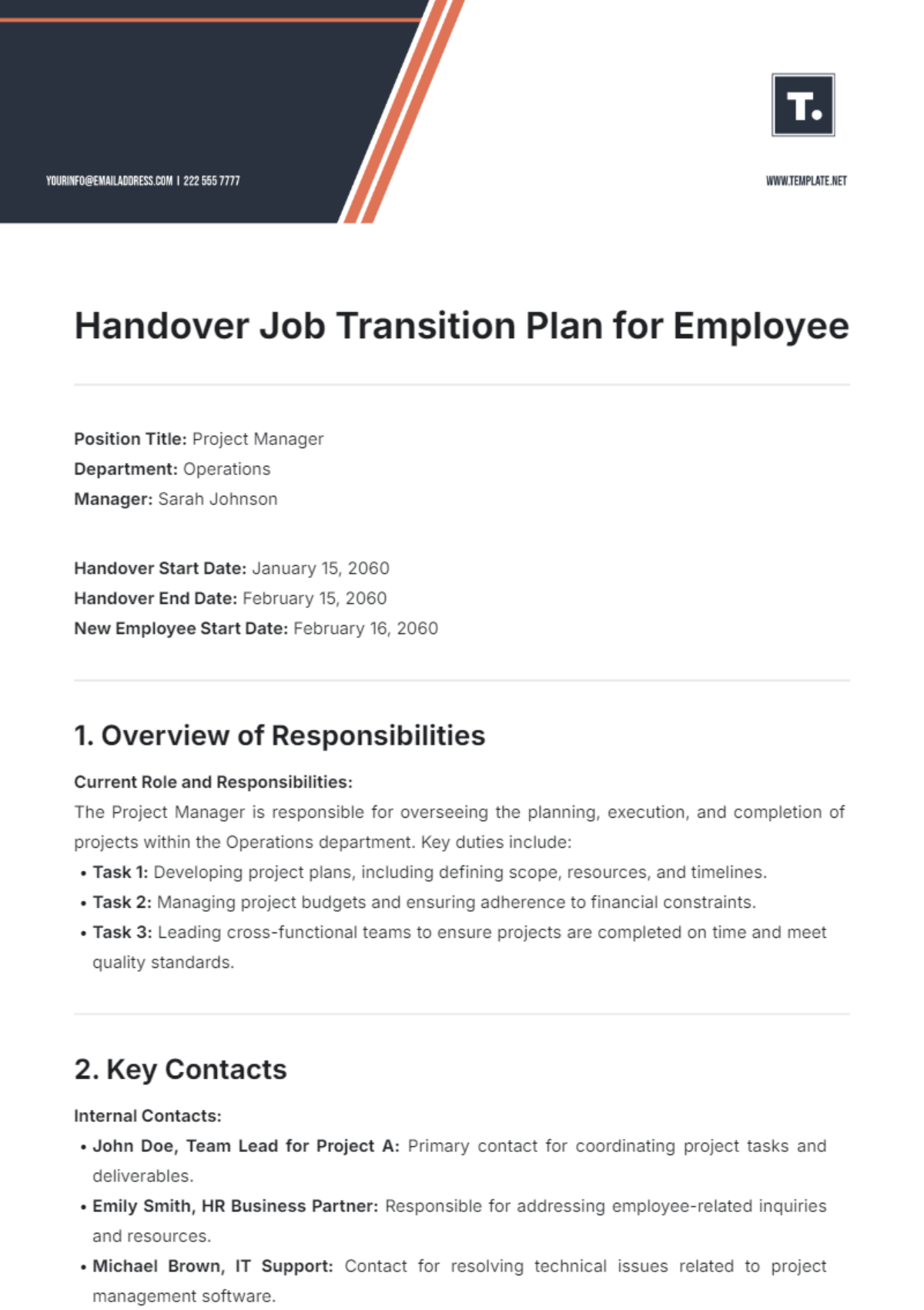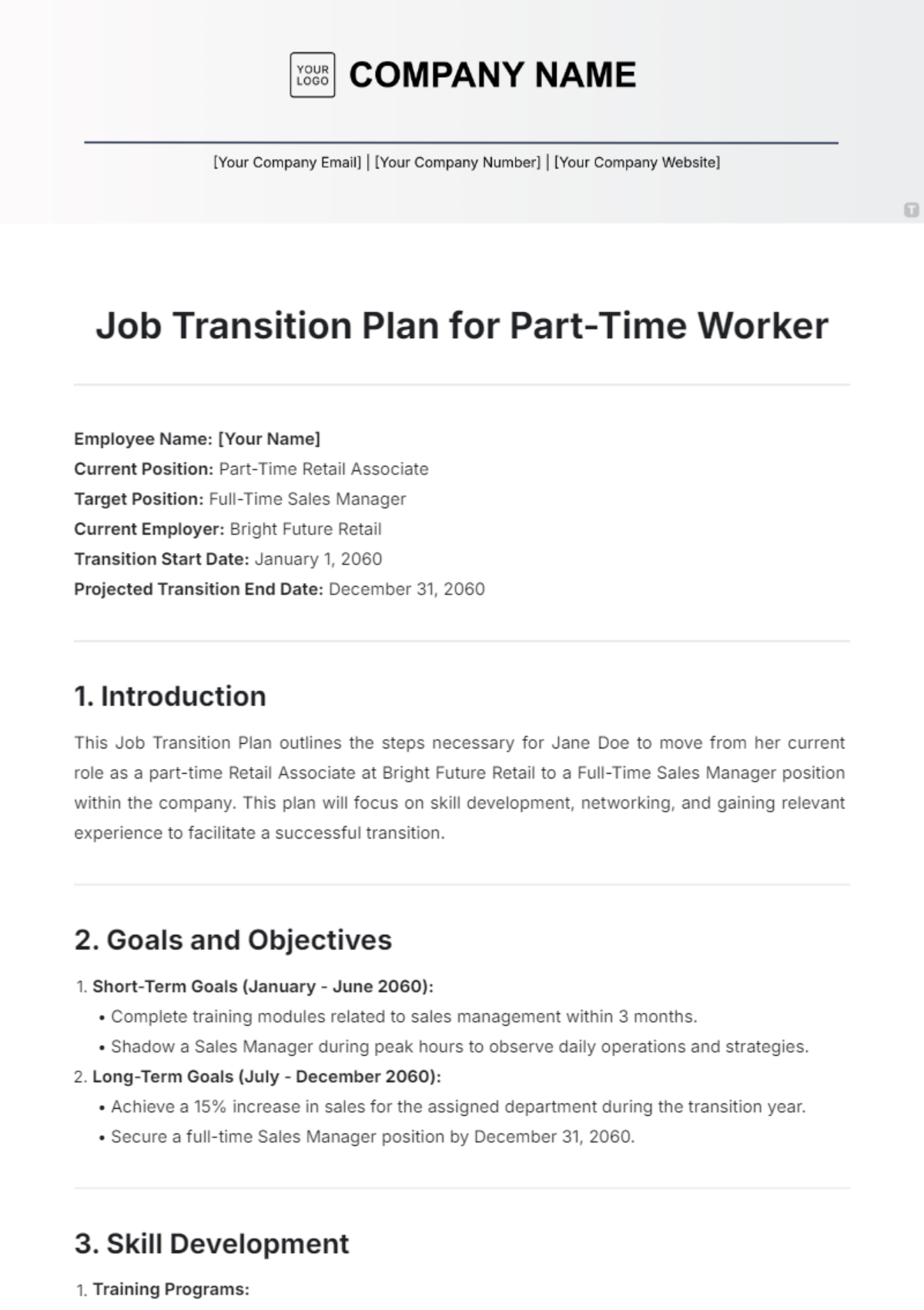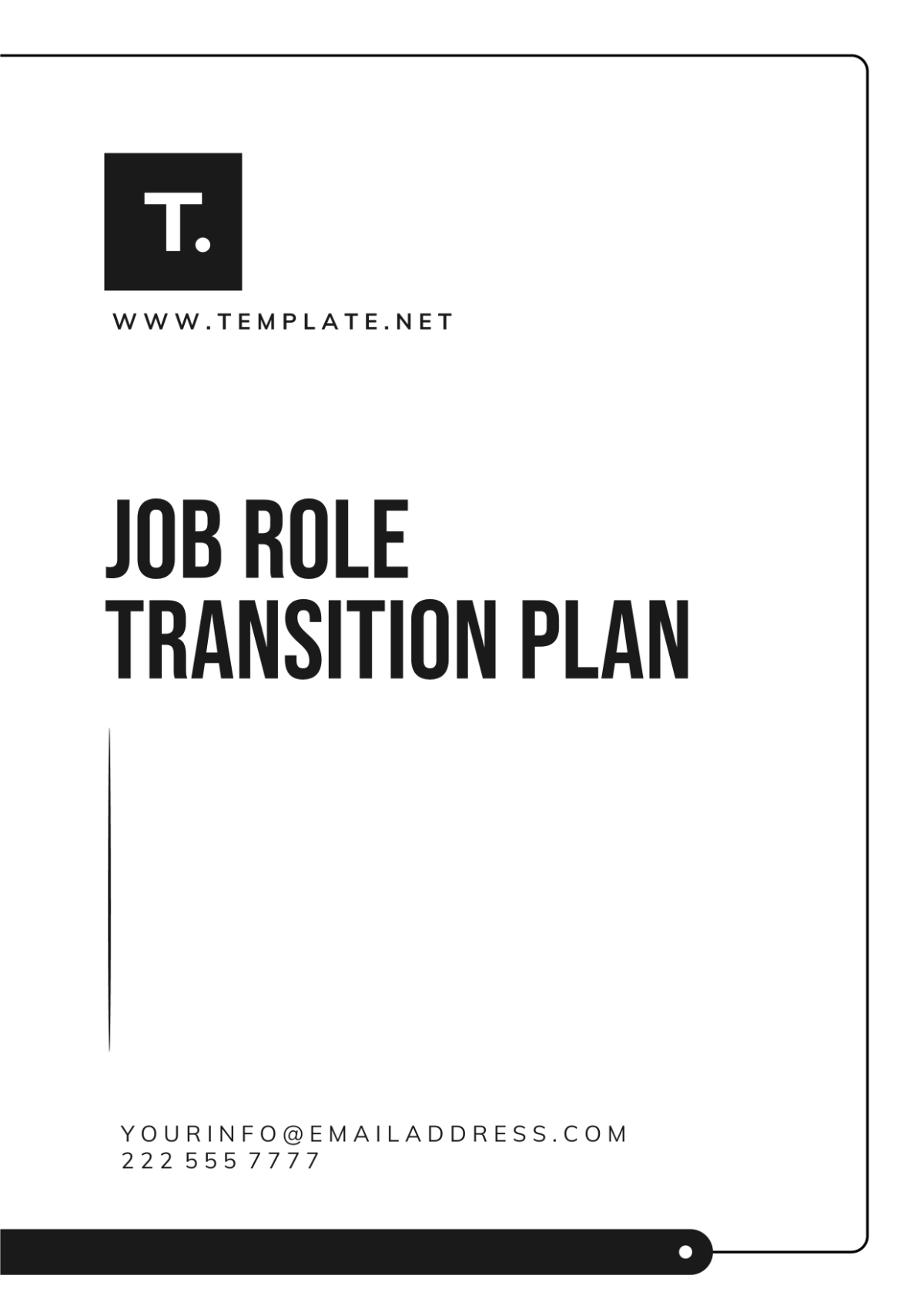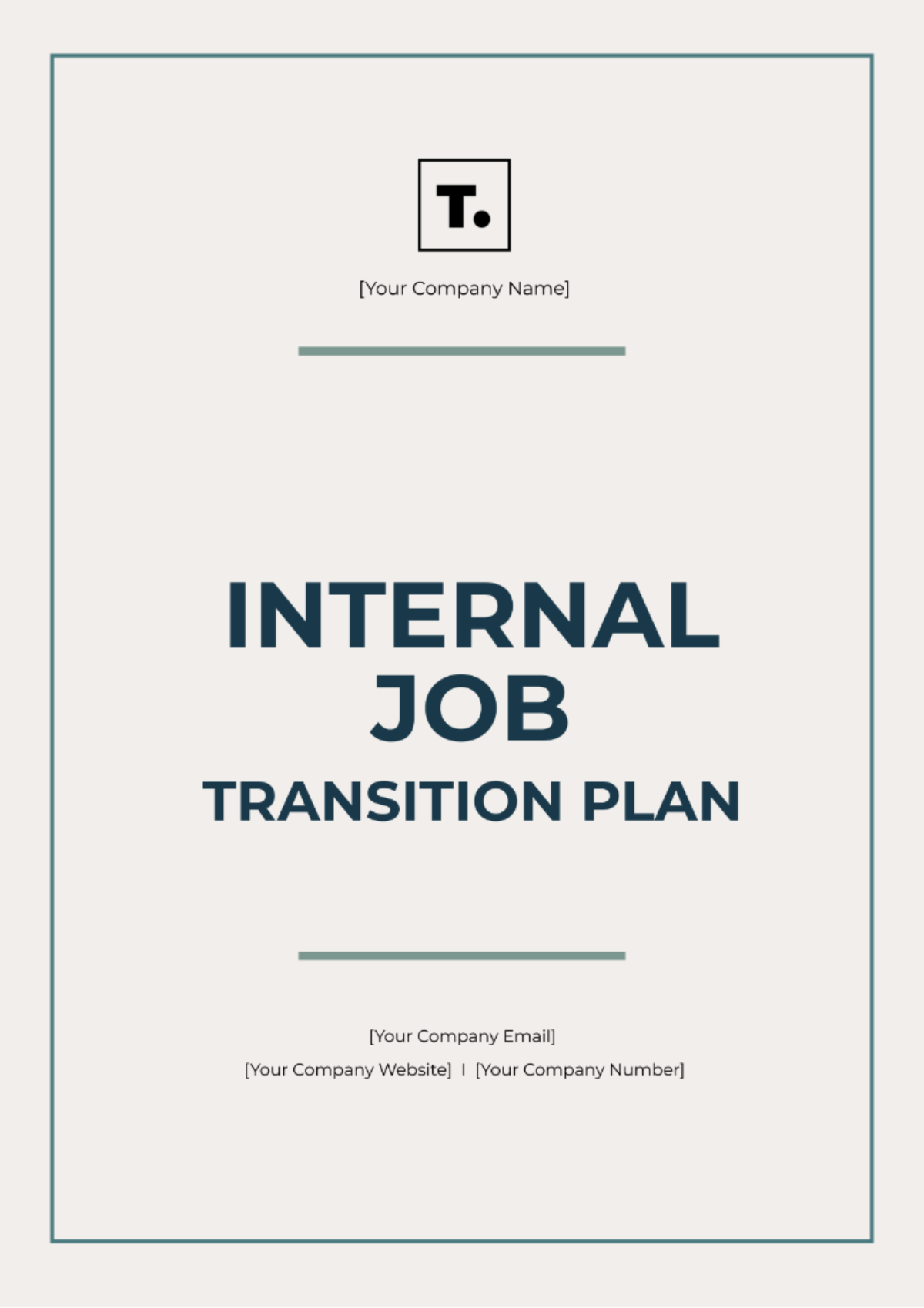New Manager Transition Plan
Prepared By: | [YOUR NAME] |
Date Prepared: | [DATE] |
I. Introduction
A. Purpose
The purpose of this Transition Plan is to provide a structured approach and roadmap for the smooth integration of the new manager, [New Manager's Name], into their leadership role within [Your Company Name]. This plan outlines the necessary steps and strategies to ensure continuity in operations and clear direction during the transition period.
B. Objectives
Smooth transition of managerial responsibilities to [New Manager's Name]: This objective ensures a seamless transition of managerial duties to the new manager, minimizing disruptions and maintaining efficiency.
Ensure continuity of operations: This objective aims to ensure continuous business operations and maintain performance levels during a leadership change, providing stability and reliability to stakeholders.
Maintain team morale and productivity: This objective seeks to maintain team motivation and efficiency during the managerial transition, ensuring a positive work environment and sustained productivity.
Set clear expectations and goals for the new manager's initial 90 days: This objective establishes specific targets and performance expectations for the new manager during the initial phase of the
II. Pre-Transition Preparation
A. Documentation Review
Collect all the specified documents and conduct a comprehensive review of each to ensure you can provide the new manager with in-depth contextual information.
Team Structure and Roles: Review org charts, directories, and role descriptions to understand team dynamics, reporting structures, and individual duties, helping the new manager identify areas for improvement.
Project Status Reports: Collect updates and documentation on ongoing initiatives to assess project health, milestones achieved, challenges faced, and upcoming deliverables, enabling effective task prioritization.
Performance Reviews: Retrieve evaluation records to identify team strengths, improvement areas, and performance trends, assisting the new manager in setting goals and providing targeted support.
Customer and Stakeholder Information: Compile details about clients, partners, and stakeholders to prioritize relationship management and align strategies with their needs and expectations.
B. Communication Plan
Develop and execute a detailed and all-encompassing communication strategy that is specifically crafted to inform thoroughly all stakeholders who are relevant about the impending transition in managerial leadership.
Inform Internal Team: Send an email to the entire team to announce the upcoming transition, introduce the new manager who will be taking over, and share all the necessary details to ensure everyone is fully prepared for these changes.
Notify Clients/Stakeholders Personally: Reach out individually via calls or emails, ensure continued support, and address concerns to maintain strong relationships during the transition.
Update Directories/Organizational Charts: Promptly update to reflect new leadership for clarity and transparency, facilitating a smooth transition and avoiding internal confusion.
III. Onboarding and Induction
A. Initial Orientation
Activity | Description |
|---|---|
| Welcome new manager, outline team roles, and foster initial communication. |
| Tour office, and set up workspace for new manager including equipment and tools. |
| Cover administrative tasks, and company policies, and address HR queries. |
B. Training Sessions
Training Topic | Description |
|---|---|
| Provide an understanding of company culture, values, and alignment with goals. |
| Offer a comprehensive overview of project processes, milestones, roles, and timelines. |
| Introduce essential software tools with hands-on training for familiarity and proficiency. |
IV. Transition Timeline
Construct a comprehensive timeline that delineates all primary activities and significant milestones. Below, you will find an example of such a timeline for the initial three-month period:
Week | Activity |
|---|---|
1 | Team introductions, office setup, review documentation |
2 | Training sessions, one-on-one meetings with team members |
3 | Shadowing outgoing manager, review ongoing projects |
4 | Start leading team meetings, and feedback sessions with HR |
5-8 | Implement initial changes, establish short-term goals |
9-12 | Review progress, adjust strategy if needed, feedback sessions |
V. Support and Resources
A. Key Contacts
Please furnish the newly appointed manager with an exhaustive and detailed list of crucial contacts who are currently part of the organization.
[Contact Name 1]
Role: HR Manager
Contact Information: [Contact Email 1]
[Contact Name 2]
Role: IT Support
Contact Information: [Contact Email 2]
[Contact Name 3]
Role: Project Manager
Contact Information: [Contact Email 3]
[Contact Name ]
Role: Sales Director
Contact Information: [Contact Email 4]
B. Available Resources
Access to relevant software tools: Ensure that employees are equipped with and have access to all the necessary software tools that are essential for carrying out their job tasks and fulfilling their responsibilities effectively.
Company performance dashboards and reporting tools: Access comprehensive dashboards and utilize advanced tools to meticulously monitor and analyze key performance metrics of the company, and efficiently generate detailed reports that will aid in strategic decision-making.
Documentation of team processes and workflows: Refer to documented procedures and workflows outlining how tasks are accomplished within the team, aiding in consistency and efficiency.
VI. Evaluation and Feedback
A. Performance Metrics
Implement distinct and well-defined performance indicators to accurately assess and measure the progress of the newly appointed manager.
Team Performance and Productivity Metrics:
Measure team productivity through metrics such as:
Number of tasks completed within specified timeframes.
Time is taken to resolve team issues or obstacles.
Team's adherence to deadlines and targets.
Overall team output or throughput.
Project Delivery Timelines and Quality:
Assess project delivery timelines and quality by:
Tracking project milestones and deadlines met.
Evaluating the accuracy and completeness of deliverables.
Monitoring any deviations from project plans and addressing them promptly.
Soliciting feedback from project stakeholders on project outcomes and satisfaction.
Team Feedback and Satisfaction Scores:
Gather feedback from team members through:
Regular feedback sessions or surveys on the new manager's leadership style and effectiveness.
Assessing team satisfaction scores based on factors such as morale, engagement, and job satisfaction.
Monitoring employee turnover rates and retention to gauge satisfaction and engagement levels within the team.
B. Regular Review Meetings
Establish regularly scheduled review meetings to provide constructive feedback and ensure continuous support is available.
Weekly check-ins during the first month: Conduct weekly meetings to closely monitor progress, address any immediate concerns, and provide support during the initial adjustment period.
Bi-weekly meetings during months 2-3: Transition to bi-weekly meetings to maintain regular communication, assess progress over longer intervals, and address any emerging issues or adjustments needed.
Monthly performance reviews thereafter: Shift to monthly meetings for comprehensive performance reviews, allowing for a deeper analysis of achievements, challenges, and areas for improvement on a more strategic level.
VII. Conclusion
By following this Transition Plan, [Your Company Name] aims to ensure a smooth and successful transition for [New Manager's Name] into their new leadership role. Continuous support, clear communication, and structured onboarding are the keys to achieving this goal.
